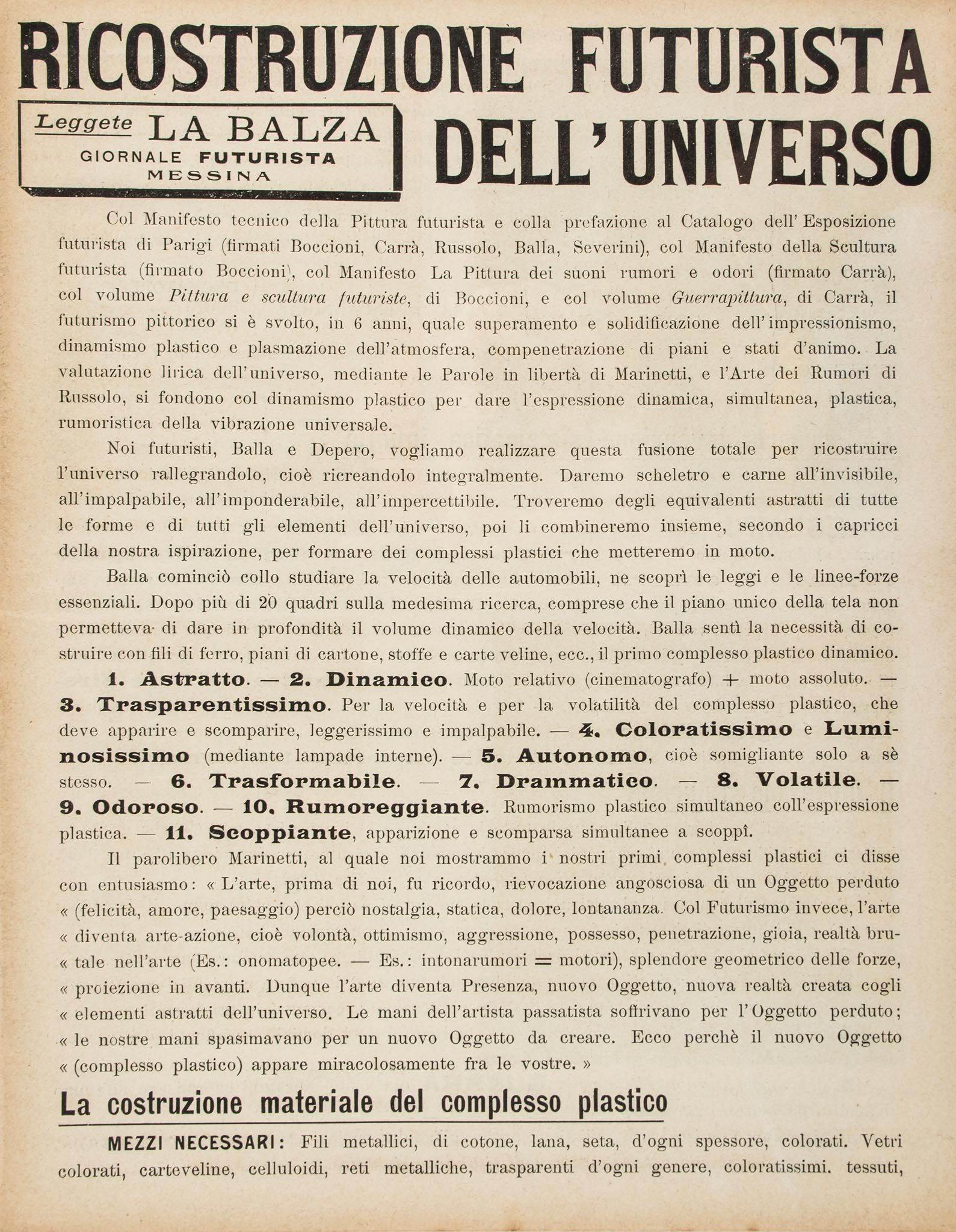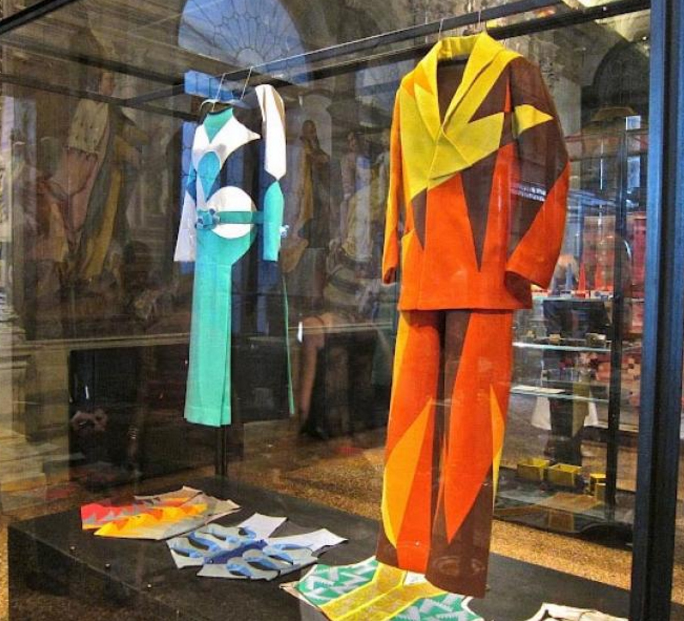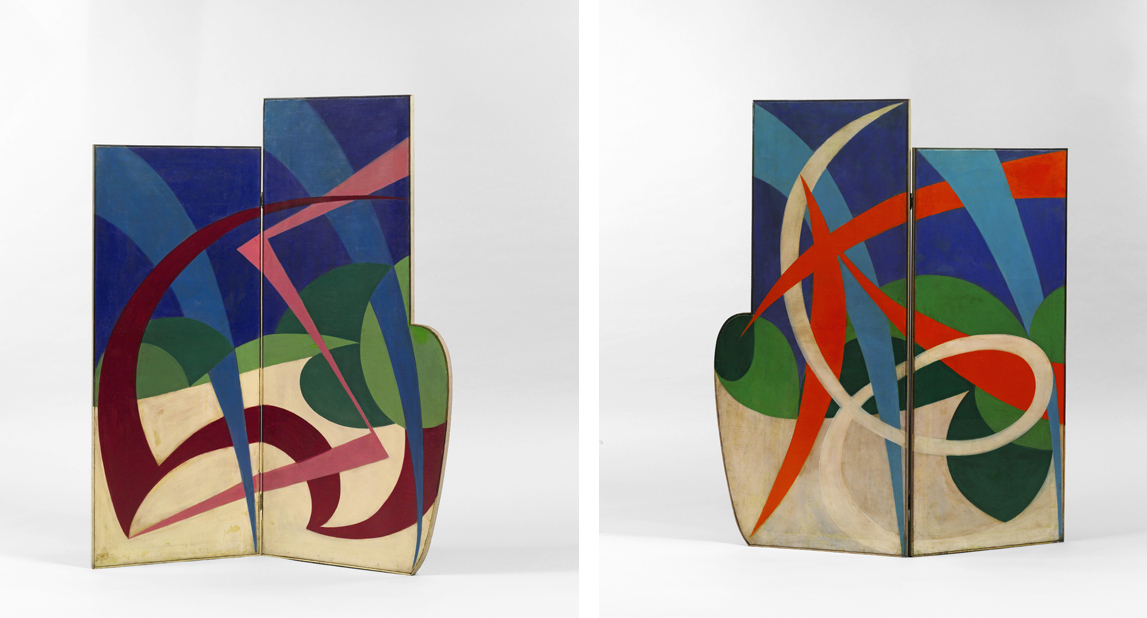The futurist reconstruction of the universe
 In the early twentieth century, Italian futurism is not merely an artistic avant-garde movement, it is a way of life. ‘Futuristic’ is synonymous with young, modern and rebellious. Everything had to be overhauled, not only in the arts, but in the whole of society. Besides painting, Giacomo Balla applies himself to the futurist design of everyday life. In 1915 he makes his ambitions more widely known with the publication of a utopian manifesto, the Ricostruzione futurista dell'universo. In it he formulates his vision for the living environment of the new human: ‘Instead of dusty spaces in which one hears the gnawing of woodworm and which elicit only complacency and laziness, we shall design lively spaces full of light and colour, with forms that are an expression of the intensity, rationality and dynamism of modern life.’
In the early twentieth century, Italian futurism is not merely an artistic avant-garde movement, it is a way of life. ‘Futuristic’ is synonymous with young, modern and rebellious. Everything had to be overhauled, not only in the arts, but in the whole of society. Besides painting, Giacomo Balla applies himself to the futurist design of everyday life. In 1915 he makes his ambitions more widely known with the publication of a utopian manifesto, the Ricostruzione futurista dell'universo. In it he formulates his vision for the living environment of the new human: ‘Instead of dusty spaces in which one hears the gnawing of woodworm and which elicit only complacency and laziness, we shall design lively spaces full of light and colour, with forms that are an expression of the intensity, rationality and dynamism of modern life.’
Futurism begins at home
Balla starts with his own universe: in Casa Balla, his home and studio on the Via Porpora in Rome, everything is self-made: tables, chairs, sofas, partitions, ashtrays, lamps and clothing. During the First World War, assisted by his eldest daughter Luce, Balla also begins making futurist utensils to sell. In 1918 he even sets up a small production company for ceramics, clothing and other futurist objects, with which he is able to earn a living, to some extent. As of 1919, advertisements appear in the magazine Roma Futurista that invite readers to visit La Casa Futurista di Balla.
Dynamic sensation
‘Dynamic sensation’ is a central concept in futurist art. Precisely how this is supposed to look remains vague, but it is anyway clear that everything static must be rejected. Futurist artists seek to express the contemporary dynamism, the sensation of speed and constant change. The car is the symbol of progress. The ‘roaring automobile’, as the futurists call it, is nothing less than the new beauty of the world.
Paravento con linea di velocità
Balla uses the theme of a moving car to experiment with the depiction of motion. In the folding screen at the Kröller-Müller, the car itself is no longer recognizable. Instead, movement and speed are depicted in an abstract, dynamic arabesque, the linea di velocità. The front and reverse of the work represent two phases of the passing of a car. On the front, the vehicle approaches: the immediate sensation for the eyes and ears is represented by the sharp, bright pink and red lines that cut through the green, rolling landscape and intense blue sky. On the reverse, the event is over. The linea di velocità split up, become lighter in colour and delineation and evaporate into space. The sound dies down. The calm is restored.

Lisette Pelsers
February 2016
